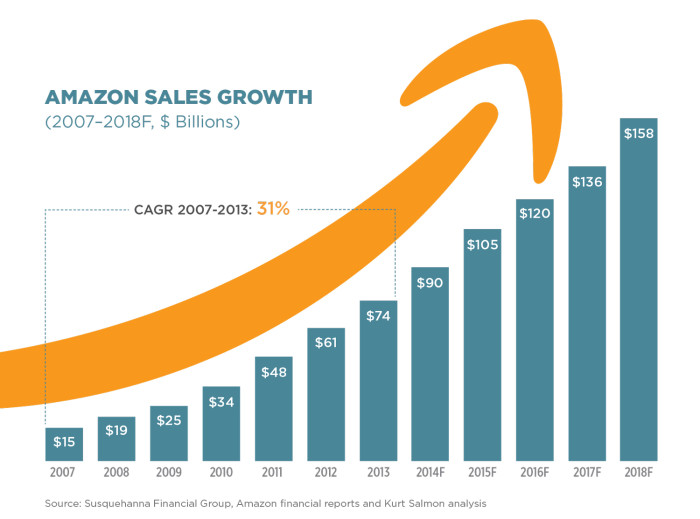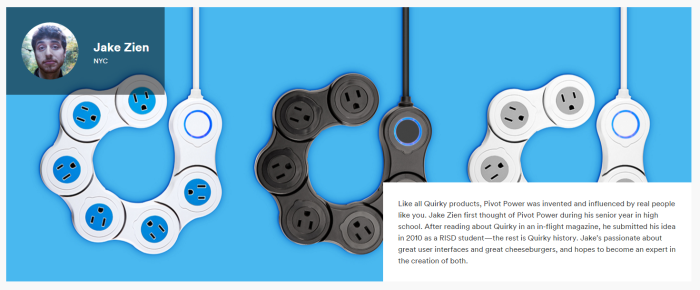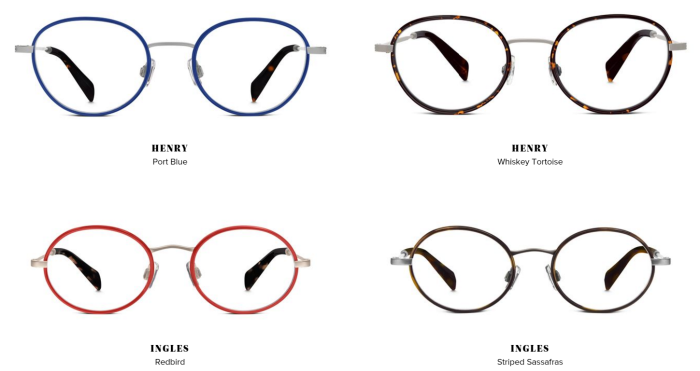How Ecommerce Brands Can Strategically Diversify Their Product Portfolio
In 2015, Amazon sold more than 480 million products and generated $105 billion in revenue. Undoubtedly, it is the largest and most successful Ecommerce company in history. Because of that, other online retailers consider it a textbook example of how they should model and grow their businesses.

According to The Telegraph, Amazon was exclusively an online book retailer during its first three years in business. By 1998, it had expanded into selling CDs and DVDs. The next year, it began offering toys and electronics. In 2000, when the dot-com bubble burst, Amazon launched Marketplace to house products from third-party sellers. But it didn’t meet the same unfortunate fate as GeoCities, Pets.com and WebVan. Instead, Amazon survived and marched towards world domination. And almost every year after that, the monolith continued expanding its product inventories and diversifying its offerings.
Among Ecommerce stores, product diversification is indeed one of the more obvious ways to grow a business. In an article for Entrepreneur, Kim T. Gordon, owner of the National Marketing Federation, writes, “Having multiple product lines may allow a growing business to diversify risk and capitalize on its established reputation. And the number of product items (or line extensions) in a product line can attract buyers with different preferences, increase profitability thanks to market segmentation and, for some businesses, even out seasonal sales patterns.” Of course, there are pitfalls to this approach. Gordon also cautions, “On the downside, there’s the potential for overextension — new products may cannibalize sales of older ones, or your resources may be disproportionately siphoned off for slower-moving products.” Thus, deciding when and how to diversify your product portfolio can be tricky.
Below, we’ve listed three different approaches to product diversification along with advice and precautions to ensure your expansion strategy does not backfire.
1. Complete product innovation
With an already established customer base, Ecommerce brands can easily be tempted to produce new products for their existing clientele. Unfortunately, research from Nielsen points out that 85% of all consumer packaged goods (CPG) product launches flop. Therefore, it is important to crowdsource demand before you expense time and money on research and development.
First, you should ask yourself:
- Is there anything particular that current and prospective customers consistently ask for, which we do not currently provide?
- Would that new product or service complement our current offerings? Are there easy upsell opportunities?
- Is this product in line with our current brand vision and values?
If the product in question passes each of these tests, then you may proceed to gathering more market data. For Practical Ecommerce, Elizabeth Hollingsworth advises, “Test-market a non-existent product. After you’ve surveyed your customers (remember, only the keenest fans will bother to participate so it may not be representative), create a test market product with Photoshop and copy and put it on beta test back-order status. Let people know the new product ‘exists’ and by clicking the back order button, their credit card won’t be charged but you’ll contact them as soon as it’s in ‘stock’. Start promoting it. If you have enough interest, launch it.” This is akin to promoting a landing page with a “soon-to-launch” product in order to gather leads that demonstrate interest and purchase intent.

Stores should choose this approach selectively though. While it is exciting to lead innovation within your industry, good products deserve iteration. Take Quirky’s downfall, for instance. With $180 million from investors, the online platform for inventions championed churning out new, bleeding edge products. Despite all that, its biggest problem was a “lack of iteration,” according to startup investor Ben Einstein. In an op-ed for New York Observer, he explains, “Quirky didn’t want to build one or two products a year (like most normal product companies), it set its sights on 20, 30, then 50+ products a year. The entire Quirky organism was designed for speed: ingesting thousands of ideas, selecting the best ones with a high-speed voting system, crafting beautiful marketing, and customizing end-caps at major retailers. But that’s where it stopped. A good company builds one product, learns from its customers, and iterates to make that product exceptional. Each step in the process is designed to refine a product and find the often elusive ‘product/market fit’ that is the basis for all successful startups.” Einstein adds, “Quirky systematically broke the cardinal rule of startups: iterate rapidly to build a product people love.”
Quirky’s biggest failure was it consistently overextended itself by investing only in new product development. Instead, it should have allocated more resources towards improving its already-launched offerings. This would have better positioned it for long-term success instead of certain doom.
2. Product line extensions

The smallest changes to existing products may enable your business to encourage repeat purchases and tap new markets. According to Elizabeth Hollingsworth, three simple changes you can make include:
- “Colour – change the colour and you could make more sales. For example, some customers may prefer non-gender-specific colours instead of pink and blue for children. Adding baby products in lemon, green or lavender can attract those customers as well as those seeking as a unisex option for mothers-to-be. Fortunately, colour costs no extra in production.”
- “Size – sell more product by stocking the sizes that sell out fastest (many women get upset that clothing websites are over-stocked with size 6s and 8s but not enough 12s and 14s). Alternatively, they might want a smaller version of your product, say as a travel gift.”
- “Product quality – those who sell paper products may be able to sell it at a premium by offering higher grade stock which feels good and expensive to touch.”
Through product line extensions, brands can expand their product offerings at little to no additional cost or effort, and reap huge rewards. Marketing professors Bruce G.S. Hardie and Leonard M. Lodish state, “Line extensions can be quite profitable.” Two examples they use to support this argument include:
- “Sales of the entire Doritos line of corn chips, for example, rose to more than $1 billion on the success of the Cool Ranch Doritos extension.”
- “In addition, diet and caffeine-free line extensions have expanded the soft-drink market to new segments; and the two- and three-liter bottles have stimulated consumption because, in many households, if they’re in the refrigerator, they get consumed.”
But remember that newer versions of older products may not always be as successful as their predecessors. Anyone recall New Coke, Pepsi Blue or Sprite Remix? Me neither.
3. Reselling products from third-parties and whitelabeling
To output completely new products, brands must invest in research and development, which can take months, if not years, to complete. Even minor product line extensions may take several weeks to do. But stores eager to diversify their product portfolio immediately can begin reselling products produced by third-parties within a matter of days. One major advantage which makes this approach particularly attractive is you do not have to invent or manufacture the product yourself. Instead, you can:
- Purchase it wholesale from other brands
- Source inventory from other brands on consignment
- Partner with a manufacturer to produce whitelabeled goods

Bonobos, for instance, sells sunglasses from Vuarnet and loafer socks from Mocc Socks & Co. on its online store alongside its colorful pants and branded menswear accessories. Bonobos strategically offers products that complement its existing offerings. Other Ecommerce companies would be wise to resell products from non-competitive vendors. In some cases, you may even be able to sell your own products through your vendor’s online store too.
The Kauffman Foundation, a non-profit dedicated to promoting entrepreneurship, notes that another way to grow your business is through product licensing. “New product offerings do not necessarily need to be products that you develop and manufacture yourself. Buying the licensing (or distribution) rights to a well-known product or service may be a way of offering your current customers something new or expanding into new markets. Licensing offers several advantages. It may give you a unique selling advantage over competitors. In many cases, because of perceived value, you can charge a higher price than for similar unlicensed products.” Exclusive distribution deals can be especially exciting if the brand you are partnering with already has demand in the market you currently serve.
Before you begin distributing products from other businesses though, carefully consider whether aligning your brand with theirs dilutes your brand or strengthens it.
Did you like this article? Get more content to help you grow your ecommerce store here: